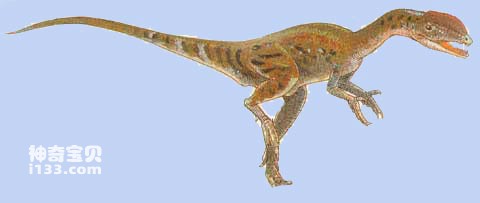In the fern forest and evergreen trees beside the river and lake in the late Triassic, an Elascosaurus was strolling and eating leisurely. It did not expect that a potential disaster was already brewing nearby - two carnivorous animals. The Lili Enlong is approaching quietly.

Li Li Enlong
The Lelienosaurus was nearly 2 meters long and weighed 100 to 140 kilograms. It was the largest carnivorous dinosaur living at that time. It looked very much like the Dilophosaurus that would appear later - it had a long neck and tail, but its forelimbs were quite short. In addition, Lelienosaurus also showed many characteristics of early carnivorous dinosaurs, such as having 5 fingers on its hands. However, its fourth and fifth fingers have degenerated and shrunk. In later carnivorous dinosaurs, the fourth and fifth fingers were not developed at all.
At this time, the Plateosaurus, which had eaten its fill of leaves, slowly walked into the swamp. After a swig, it walked back to the shore contentedly. Suddenly, the two Lilian dragons rushed out from the hidden trees. One of them bit the Plateosaurus' neck at once, and the other also took advantage of the situation to attack. After a period of struggle, Plateosaurus fell into the shallow water stained red with blood. Not long after, the Plateosaurus, which was still alive just now, had become a delicious meal for the two Lilien dragons.
This attack method of Lelienosaurus is very similar to the hunting method of many modern predators. They usually attack prey in water, because large vegetarian animals move very slowly in water and have difficulty escaping predators.
animal tags:
We created this article in conjunction with AI technology, then made sure it was fact-checked and edited by a Animals Top editor.